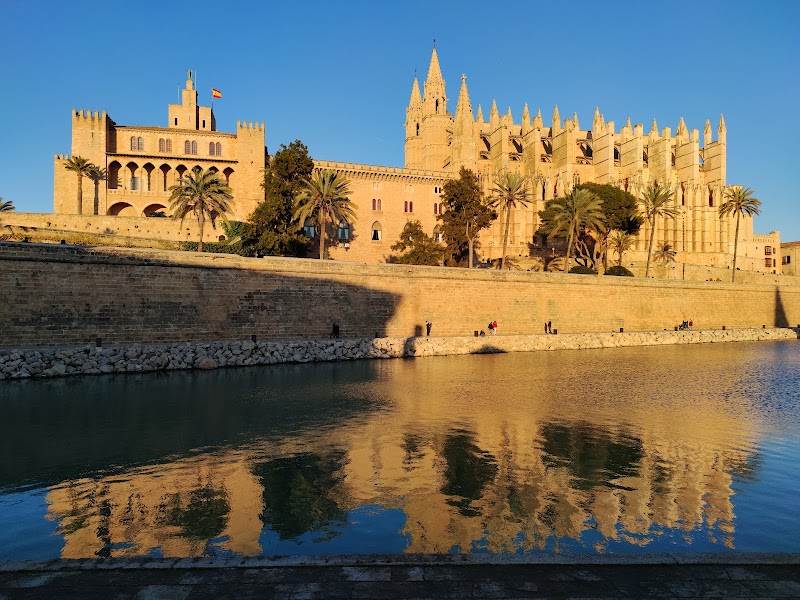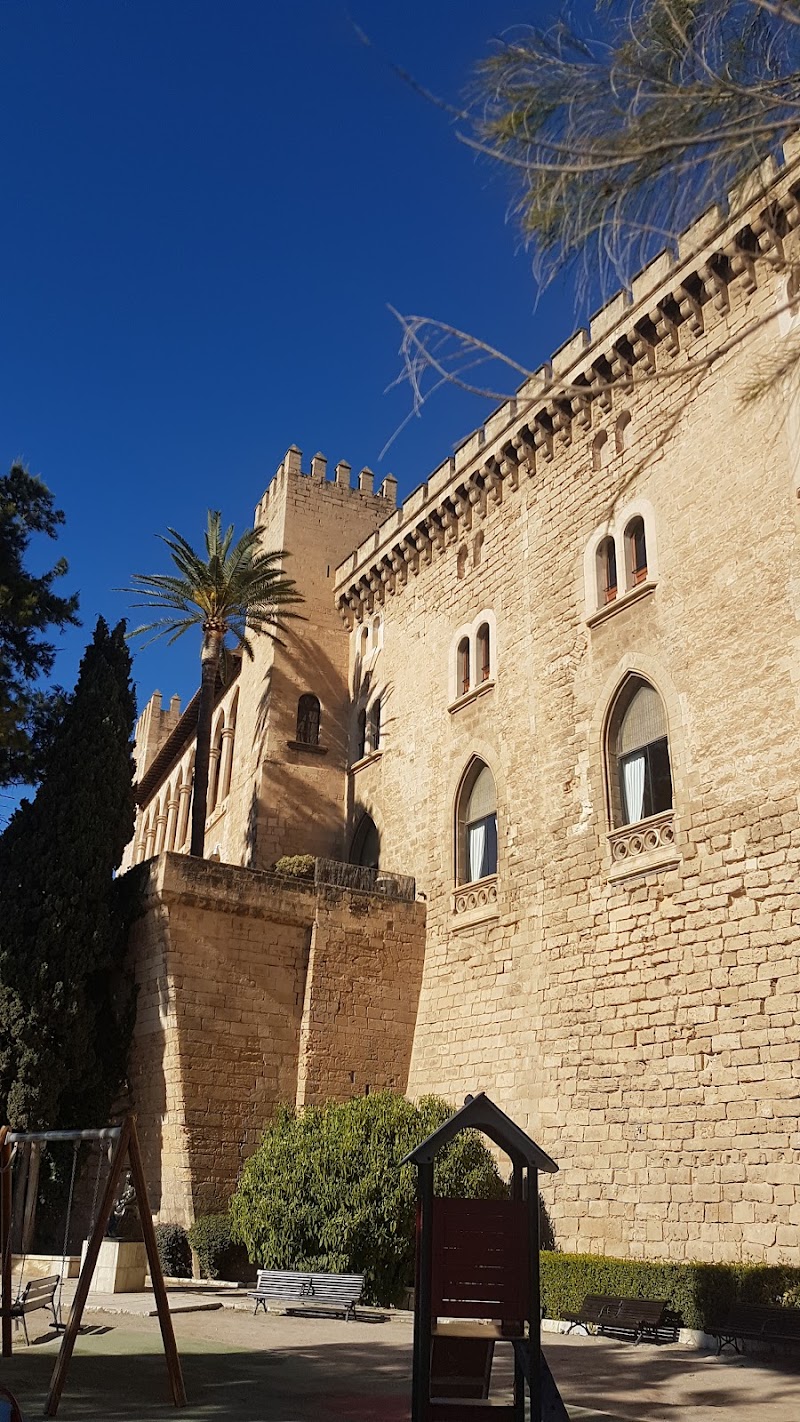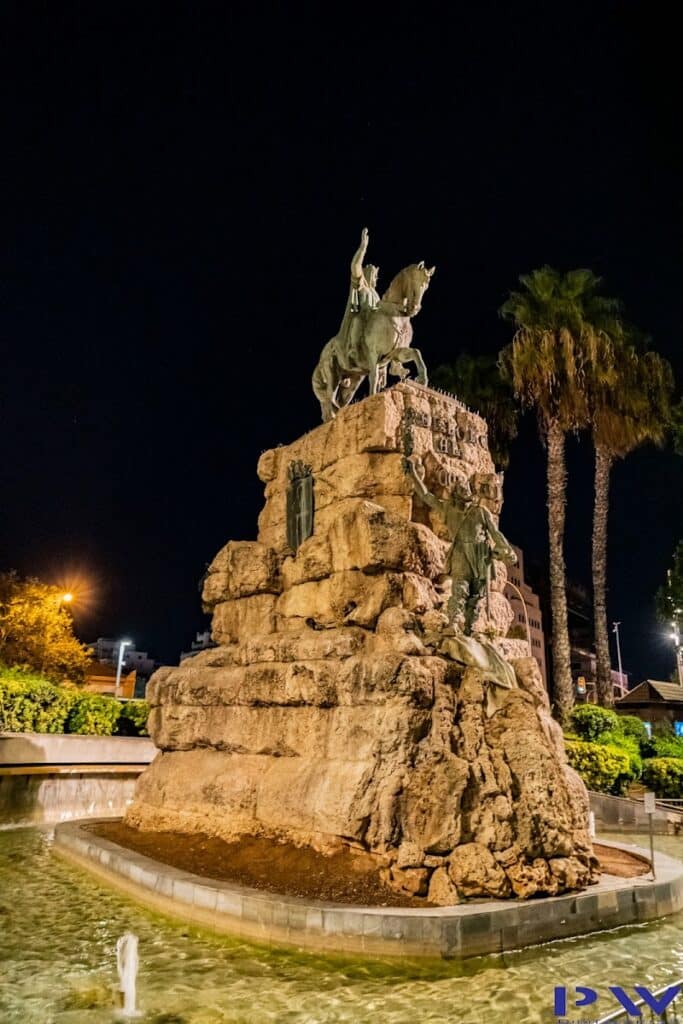Welcome to the Island of Mallorca
Did you know that the Island of Mallorca is the largest of Spain's Balearic Islands, with over 550km of coastline? This Mediterranean paradise is brimming with diverse experiences just waiting to be discovered. From the golden sands of Playa de Alcudia, the majestic cliffs of Cap de Formentor, to the bustling city life in Palma, and the tranquil mountain village of Valldemossa, Mallorca is a sensory feast. The essence of this Mediterranean gem is beautifully captured in our comprehensive guide, designed to offer you an unforgettable journey.
Introducing the Tourist Map of Island of Mallorca
Our meticulously designed tourist map of Island of Mallorca is a treasure trove of information, divided into distinctive layers showcasing museums, monuments, cities, towns, beaches, and a plethora of tourist activities. Each point on the map comes with a detailed overview of the site, estimated visit time, budget, and invaluable traveller recommendations, making it a handy companion for your adventure. The best part? You can easily copy this map onto your mobile device, ensuring all the essential information is at your fingertips as you explore the sun-drenched landscapes of Mallorca!
How to Make the Most of the Map to Visit Island of Mallorca
Exploring Mallorca with our interactive tourist map is akin to having a local guide by your side. With this handy tool, you can visualize all nearby points of interest, be it museums, monuments, beaches, or cities, no matter where you are on the island. For instance, if you've just visited the stunning Palma Cathedral, open the map on your mobile and you'll see all nearby points of interest to continue your exploration seamlessly.
The points of interest on the map are meticulously organized into various layers. This feature is immensely helpful in planning your visits effectively. If you are in the northern part of the island, you can organize the points appearing on the map in route layers and calculate the time from one point to another. This convenience is further enhanced by the estimated visit times provided for each site, making your journey through the Mallorcan landscapes a breeze.
Experience the Iconic Places of Mallorca
Mallorca is a trove of cultural treasures and iconic sites. Start your journey in the capital city, Palma, home to the magnificent Palma Cathedral, a masterpiece of Gothic architecture. Marvel at the intricate designs of the rose window and the stunning views of the city from the rooftop. The nearby Royal Palace of La Almudaina, an official royal residence, offers a glimpse into the island's rich history.
After exploring the city, head towards the shimmering coastline. Playa de Alcudia, a 7km-long beach, is a haven for sun-worshippers and water sports enthusiasts. At the northernmost point, the Cap de Formentor offers breathtaking views of the sea crashing against the cliffs. Don't miss the iconic lighthouse at the tip of the peninsula.
Immerse in Unique Experiences
Mallorca offers experiences that go beyond the usual tourist trails. Immerse yourself in the tranquillity of the mountain village of Valldemossa, famous for its Carthusian monastery and its connection with the composer Chopin. Enjoy a traditional Mallorcan meal in one of the local restaurants overlooking the stunning landscapes.
For adventure seekers, the Serra de Tramuntana mountain range is a paradise. Go hiking, cycling, or simply drive through the winding roads, stopping at the picturesque villages and scenic viewpoints. Don't forget to sample the local wine at one of the vineyards along the way.
Planning Your Visit
While Mallorca enjoys pleasant weather throughout the year, the best times to visit depend on the experiences you seek. For beach lovers, the summer months from June to September are ideal, while spring and autumn are perfect for outdoor activities. Winter, with fewer tourists, offers a peaceful experience.
Use our map to plan your routes and estimate your visit times. Local tips like visiting the popular sites early in the morning or late afternoon can help you avoid the crowds. Also, remember that some sites may close for siesta in the afternoon, typically between 2 and 5 PM.
The Island of Mallorca is well-connected with an efficient public transportation system. Consider using local buses, trains, or even bikes to travel between points of interest, adding an eco-friendly touch to your journey.

Booking.com
Discovering Mallorca's Best Beaches
With over 200 beaches, choosing the perfect sandy spot on the Island of Mallorca may seem daunting. Let's narrow it down for you. Playa de Muro, a Blue Flag beach with shallow waters and fine sand, is perfect for families, while Cala Agulla, surrounded by pine forests and mountains, offers a natural retreat. For a lively beach experience, head to Magaluf Beach, popular for its water sports and vibrant nightlife.
Our map highlights all the beaches with symbols indicating the amenities available, such as lifeguards, accessibility, and nearby restaurants. Consider visiting the beaches during the shoulder months of May-June and September-October when the weather is still warm, but the crowds are fewer.
Navigating Mallorca's Rich Historical Sites
Mallorca's rich history is beautifully preserved in its architectural wonders. Most museums and monuments, including the iconic Palma Cathedral and the Bellver Castle, open at 10 AM and close around 6 PM. To avoid the rush, plan your visit early in the morning or late in the afternoon.
Remember, some sites may close for siesta, typically between 2 and 5 PM. Also, consider visiting on Sundays when many museums offer free entry. Our map provides up-to-date information on the opening hours, entry fees, and other relevant details for each historic site.
Exploring Mallorca's Breathtaking Hiking Trails
The rugged landscapes of Mallorca offer some of the best hiking trails in the Mediterranean. The Serra de Tramuntana mountain range is particularly famous for its UNESCO-listed trails. Whether you choose the challenging route to Puig de Massanella or the scenic path to Castell d'Alaró, make sure you are equipped with suitable hiking gear, plenty of water, and snacks.
For a unique experience, try the Dry Stone Route, a long-distance hiking trail stretching over 150km. Remember to check the weather forecast before embarking on your hike, as conditions can change rapidly in the mountains. Use our map to discover the best trails and their difficulty levels, ensuring a safe and exciting hiking adventure in Mallorca.

Frequently Asked Questions (FAQs)
1. What are some unique cultural experiences to enjoy in Mallorca?
Mallorca, with its rich history and vibrant local culture, offers several unique experiences. Visit the quaint mountain village of Valldemossa, famous for its Carthusian monastery and the Chopin Festival in August. Explore the traditional markets in towns like Sineu and Inca where you can purchase local crafts and produce. Don't miss the opportunity to taste ensaimada, a traditional Mallorcan pastry, at a local bakery.
2. Which are the best beaches for families in Mallorca?
With its incredible variety of beaches, Mallorca is a paradise for families. Playa de Alcudia, with its calm, shallow waters and nearby amenities, is perfect for families with young children. The sandy beach of Cala Agulla, surrounded by pine trees and clear waters, is another great option for a fun family day out.
3. What are some of the best hiking trails in Mallorca?
For nature lovers, the Serra de Tramuntana mountain range offers numerous hiking trails. One of the most popular is the dry stone route (Ruta de Pedra en Sec), a long-distance trail stretching across the length of the mountain range. For a shorter hike, try the trail from Deià to Llucalcari, offering stunning views of the coastline.
4. How can I navigate the Island of Mallorca using public transportation?
Mallorca has an extensive public transportation network, comprising buses, trains, and even a vintage tram. The TIB (Transport of the Balearic Islands) buses connect Palma with major towns and tourist areas. The scenic train ride from Palma to Sóller is a must-do. For shorter distances, consider renting a bike to enjoy the island's beautiful landscapes at your own pace.
5. Where should I stay in Mallorca for a cultural experience?
If you're seeking a cultural experience, staying in Palma, the capital city, would be ideal. The city is home to several historical sites, world-class museums, and a plethora of dining and shopping options. For a more rustic experience, consider staying in a traditional finca (country house) in the countryside or in the mountainous region of Serra de Tramuntana.
6. When is the best time to visit Mallorca?
While Mallorca is a year-round destination, the best time to visit depends on your interests. If you're a beach lover, the summer months from June to September offer warm waters and plenty of sunshine. For outdoor activities like hiking and cycling, spring (April to June) and autumn (September and October) are ideal. Winter offers a peaceful experience with fewer tourists and mild Mediterranean weather.

